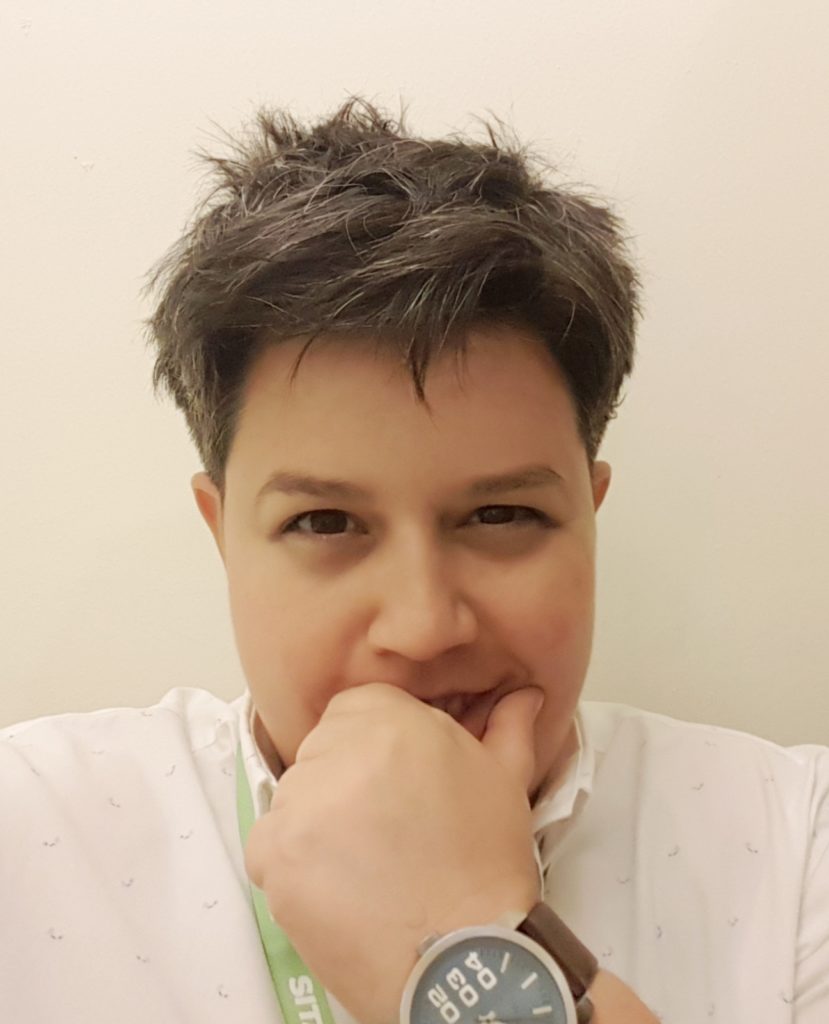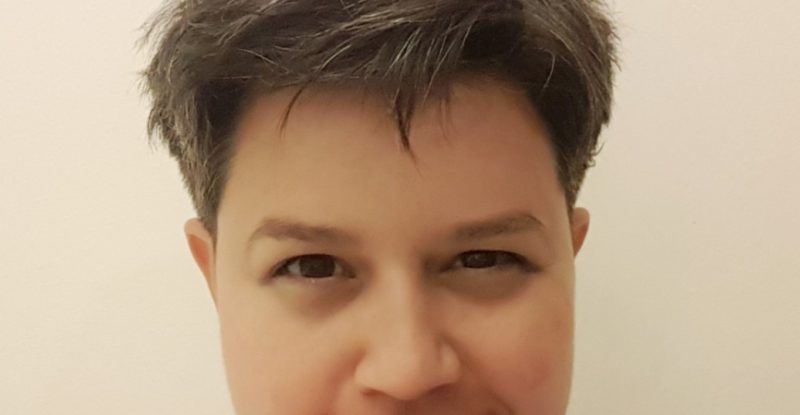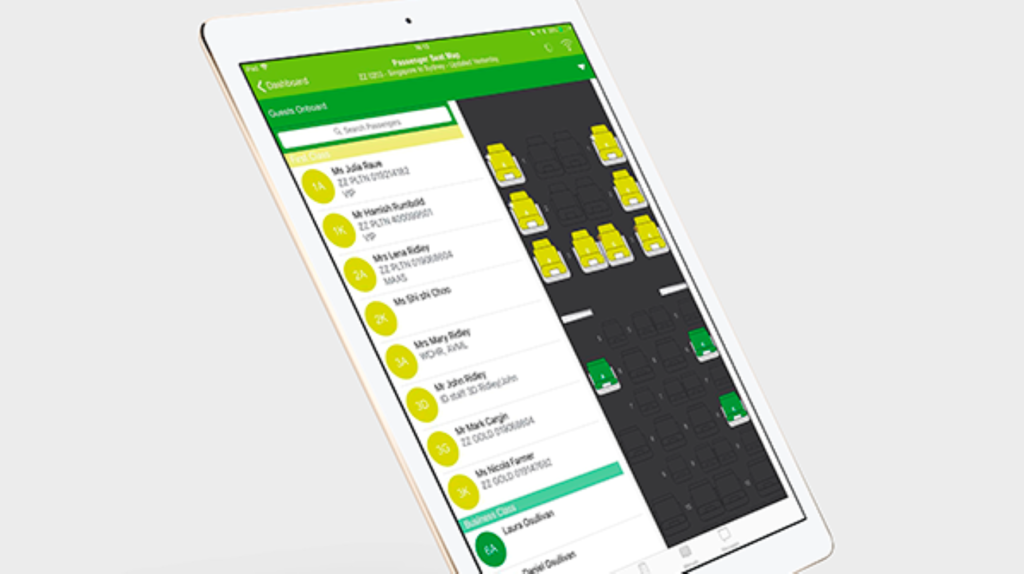 Growing up in the “magnificent mountains” of Northern Greece, Evi Dougali, product manager CrewTab at SITAONAIR, says her childhood was filled with family, music, travel, and skiing. But from a very early age, what she really wanted to do was become a pilot and an architect, or both.
Growing up in the “magnificent mountains” of Northern Greece, Evi Dougali, product manager CrewTab at SITAONAIR, says her childhood was filled with family, music, travel, and skiing. But from a very early age, what she really wanted to do was become a pilot and an architect, or both.
“I spent a lot of time at my parents’ architectural office – surrounded by architectural plans and LEGOs- when I was young,” remembers Dougali. “And I was always fascinated by human-centered design, function and form, urban spaces and flows, and how design and technology could make life and processes faster, easier, and more efficient. At some point [my] passion for aviation and architecture came together, and here I am today, working in aviation technology.”
After graduating with a B.Eng/MSc in Products & System Design Engineering from the University of the Aegean and an MSc from the Netherlands-based Delft University of Technology, Dougali worked for software companies in both Athens and the Netherlands for a few years before landing a job working for the Innovation Team at Zodiac Aerospace (now Safran Cabin). It was there that Dougali first learned about SITA and SITAONAIR, and their innovative products, and decided to join the CrewTab team in London.
A tablet dashboard which digitizes cabin crew activities before, during, and after a flight, CrewTab enables airlines to unlock unlimited digital transformation possibilities by, as Dougali explains, “going digital for greater operational efficiency, and going personal for excellent service.” By fully digitizing onboard workflows and intelligently integrating with an airline’s existing IT systems, CrewTab also allows for increased operational efficiency, improved crew performance, and reduced costs.
Best of all, CrewTab is almost entirely paperless, something which Dougali suggests isn’t just good for the environment and inflight workflow efficiency, but also offers a roadmap of things to come.
“Digital transformation is here to stay, bringing numerous, well-documented benefits for many industries, including aviation,” explains Dougali. “While this move to paperless may call for new business models and operating processes, even new regulations, and while current regulations demand that some paper copies remain in place – a printed copy of a safety manual onboard, for instance – we believe that going totally paperless is not a far-off reality for an airline. In fact, at SITAONAIR we [are] already bringing the digital revolution to the cabin and seeing how it is helping our customers.”
Noting that by the first half of 2018, SITAONAIR customers Virgin Australia and Etihad Airlines had already eradicated 250,000 paper forms between them through CrewTab’s Go Digital electronic forms, Dougali says the numbers speak for themselves.
“In an era where everything is done digitally, from checking the weather, to connecting with friends, to getting a theater ticket, booking holidays, and paying your bills … paper processes have become rapidly outdated and inadequate. To me, going digital is the only way forward [and] it’s in the interest of every business to harness the unlimited possibilities of the digital airline. Digitization can cut through silos and allow for horizontal integration, bridging communication gaps, and overcoming any obstacles to taking a business forward.”

Evi Dougali touts the benefits of going paperless, not only for the environment but also to improve workflow efficiency. Image: SITAONAIR
Speaking of moving forward, Dougali says despite the fact that aviation technology remains a predominately male-dominated profession, change is definitely in the air. Especially at SITAONAIR.
“I’m fortunate to have a great team around me, both in London – where I work with our portfolio director Toby Tucker, an excellent man, a true professional, and a great leader, and a team of product managers who have been great at supporting me in my first steps at SITAONAIR – and with my SITAONAIR colleagues across the world. And as a woman in a STEM field, it feels good to be working for a company that has a woman at the helm – SITA CEO Barbara Dalibard.”
But Dougali says the thing she probably appreciates most about working for SITAONAIR is the deeply collaborative spirit that flows through everything SITAONAIR sets out to accomplish.
“At the end of the day, that’s what matters the most: having that environment, support, help, and inspiration to flourish and grow, and being able to contribute to the connected aviation future.”
When asked what advice she would offer to women and young girls considering a career in STEM today, Dougali suggests that, like the architectural blueprints she grew up with, sticking to a carefully mapped-out plan is key.
“My advice to young girls out there looking for a career in STEM is to [make] your own vision your lighthouse in times of doubt,” says Dougali. “Once a girl has a dream of what it is she wants to do in her life, she [should] find a way to pursue and achieve it; step by step, day by day. Being a girl in a male world has its difficulties, but no girl should allow anyone else to tell them what they can or cannot do. We need to address our own fixed ideas and stereotypes, be true to ourselves, our dreams and self-beliefs, and not allow anyone to dictate our course. Persevere and grab every opportunity that comes your way [because] the world is changing [and] it’s in our hands to lead.”
Related Articles:
- Sabre’s head of NDC on STEM, #MeToo and the value of sticky notes
- SITAONAIR’s Katrina Korzenowski sees big opportunities in Asia-Pacific
- Aviation and tech company chief seeks to increase women in both fields
- Europe’s EESC unveils Platform for Change to improve gender equality
- Op-Ed: A woman’s place is in the flight deck and the C-Suite
- Former teacher seeks to attract girls to STEM with Fly Like a Girl
- Op-Ed: All-male APEX emerging tech panel needs women’s voices
- Press Release: PAL to enhance #PaxEx with SITAONAIR – PAL CrewTab











